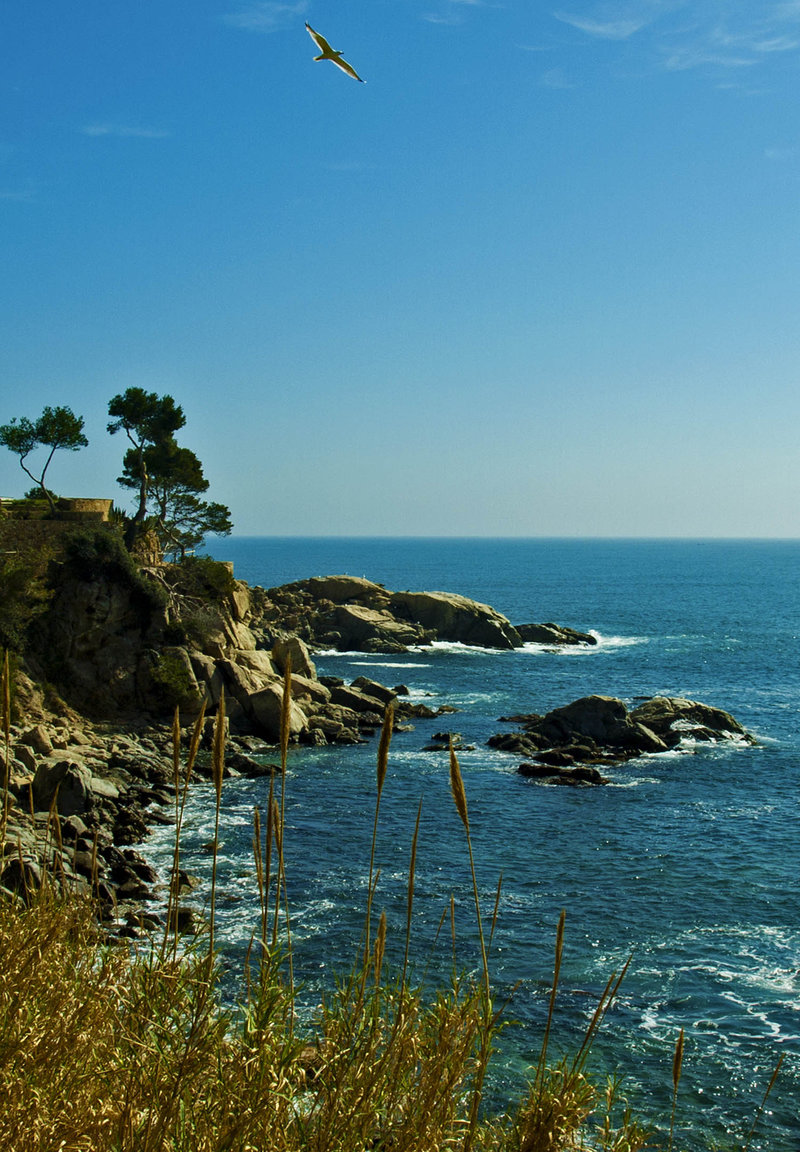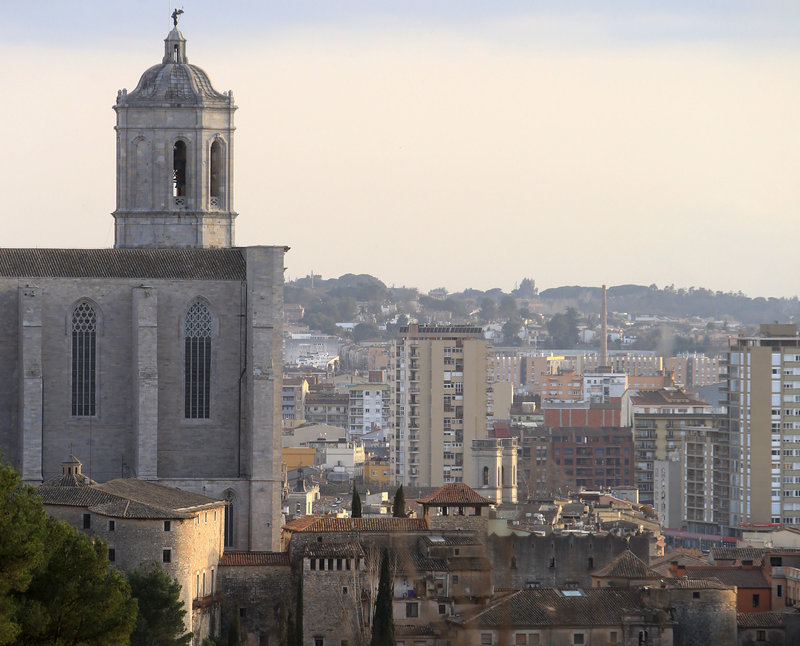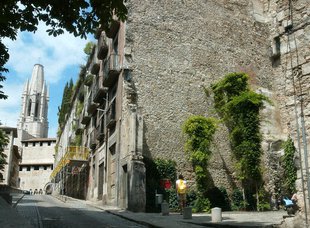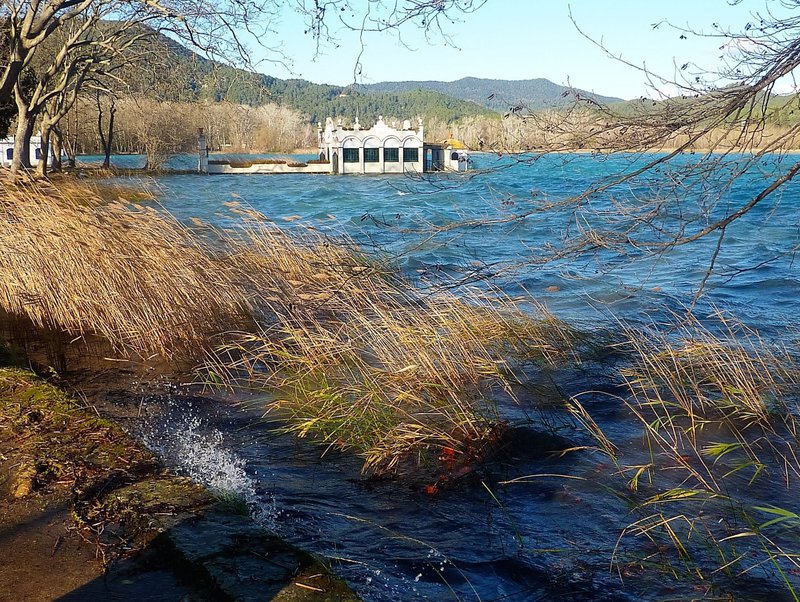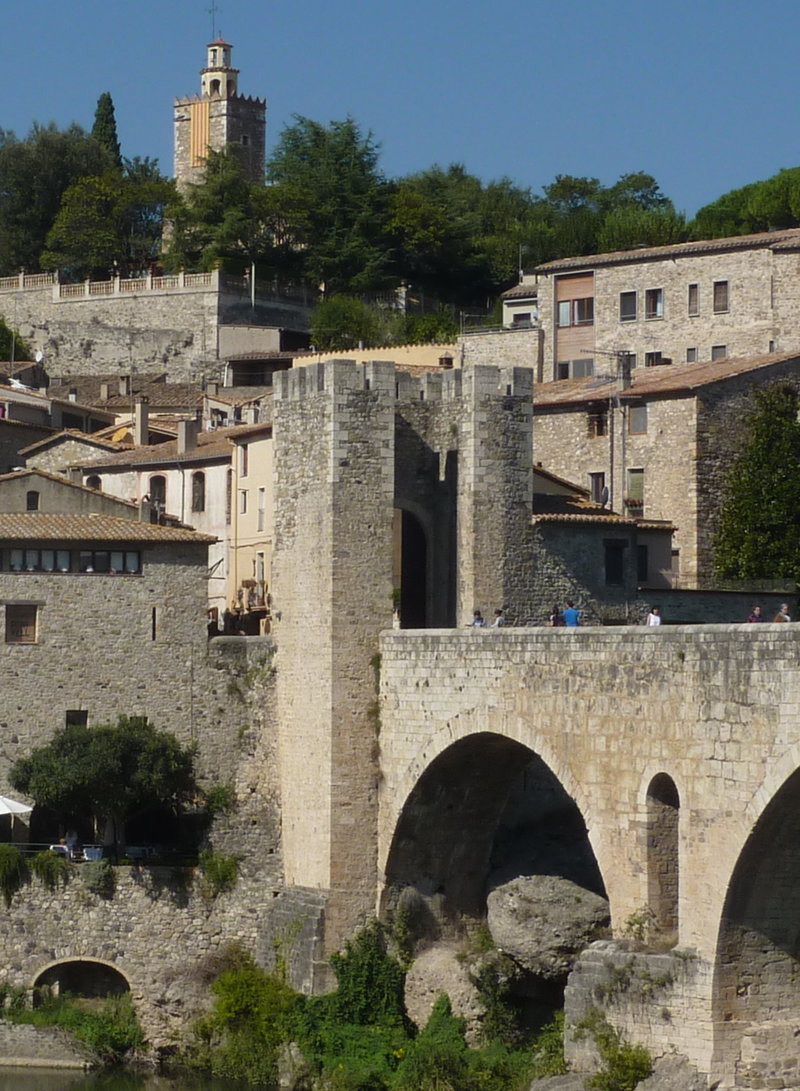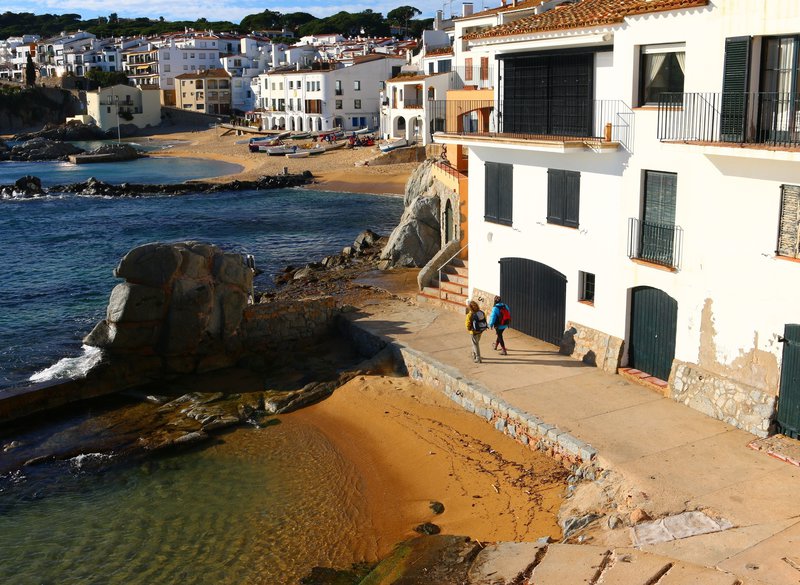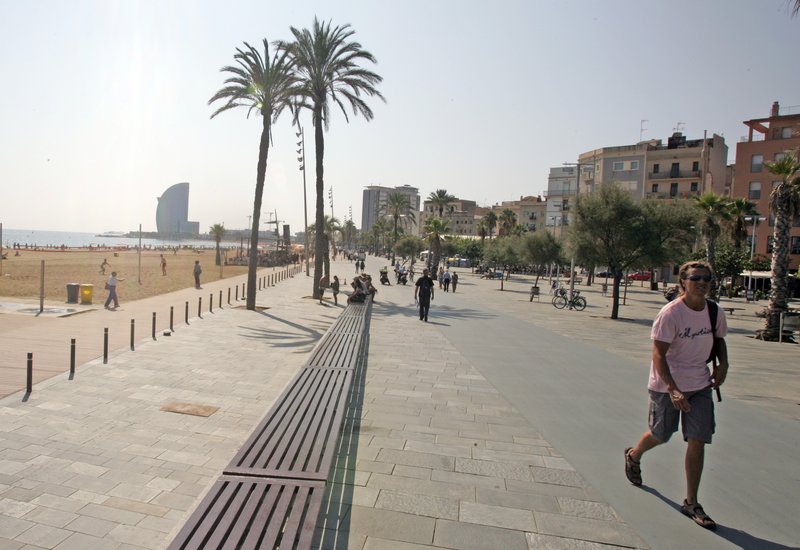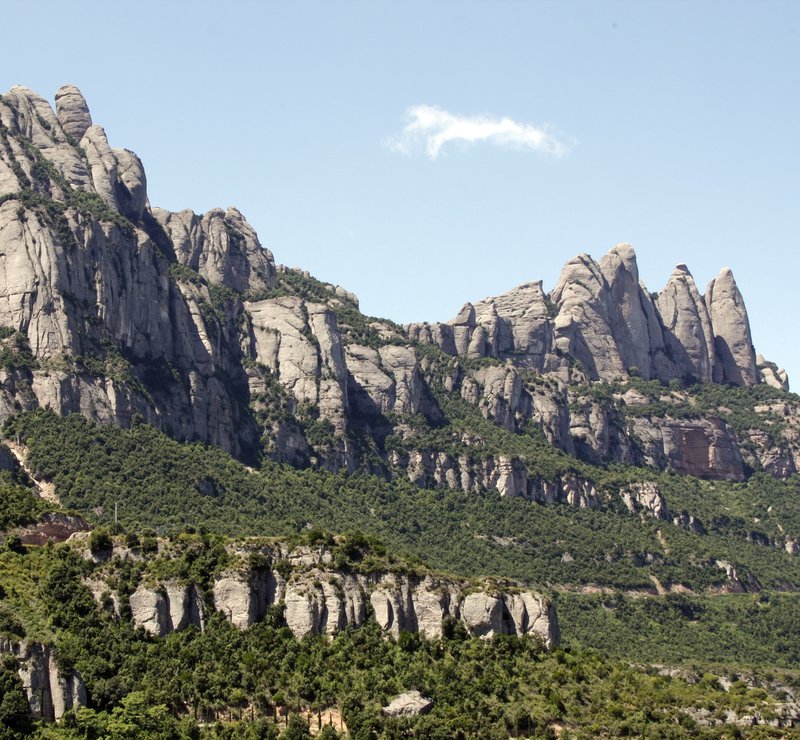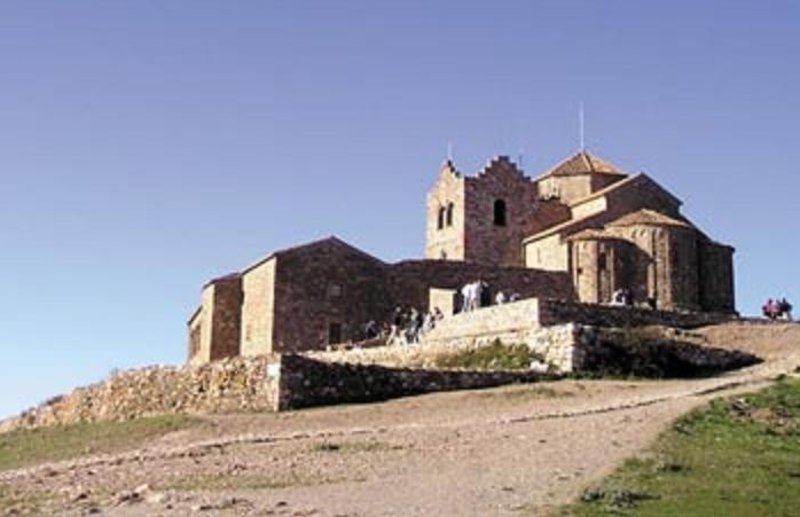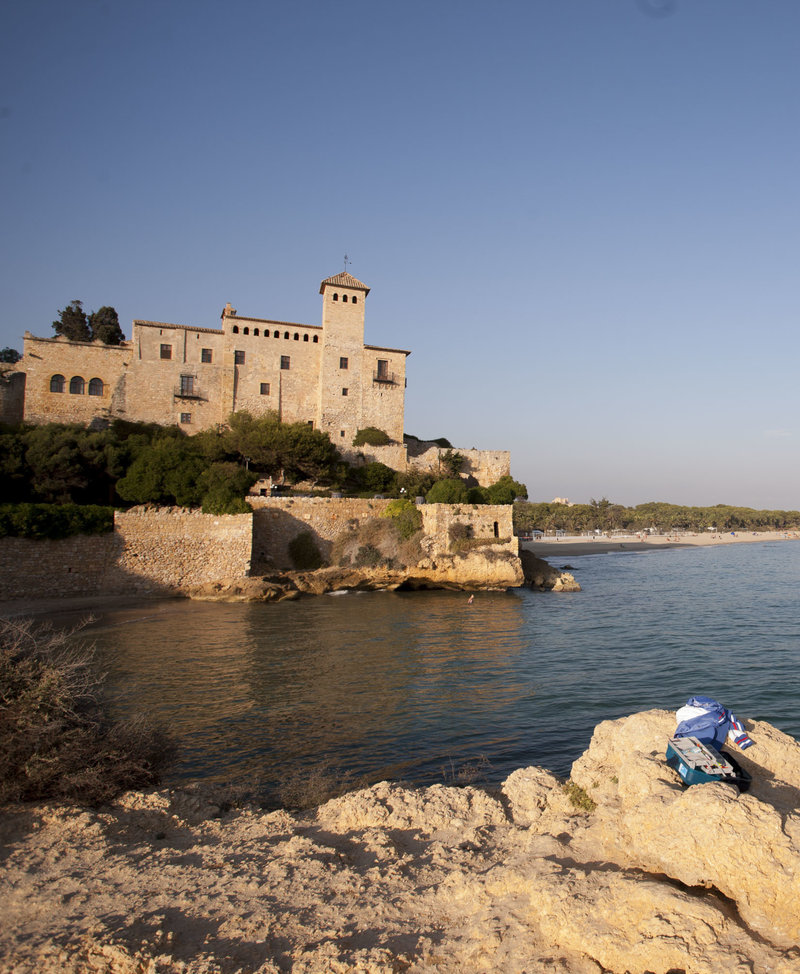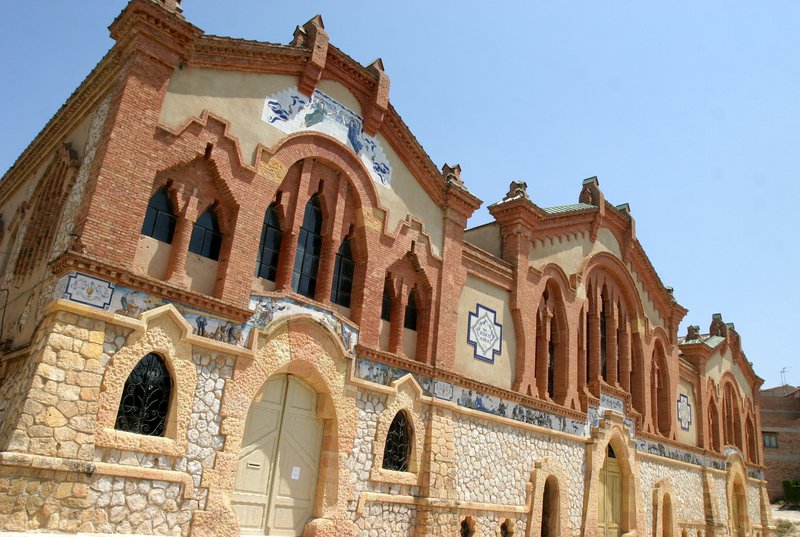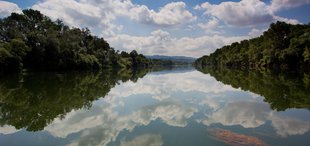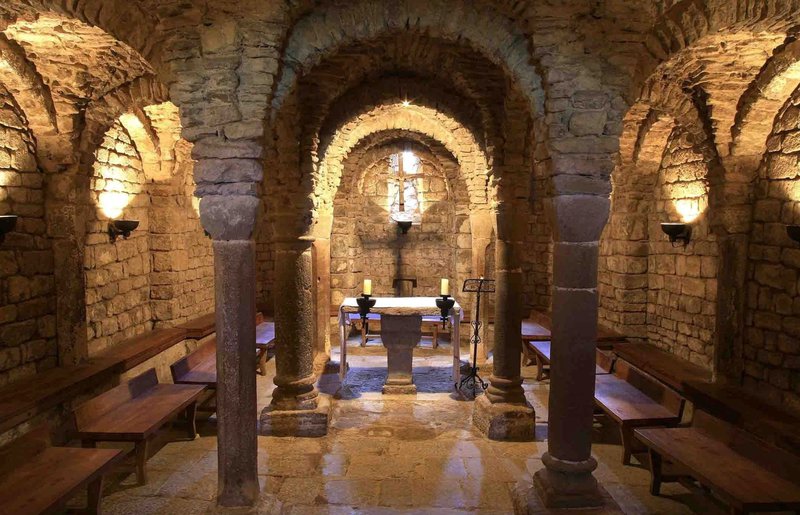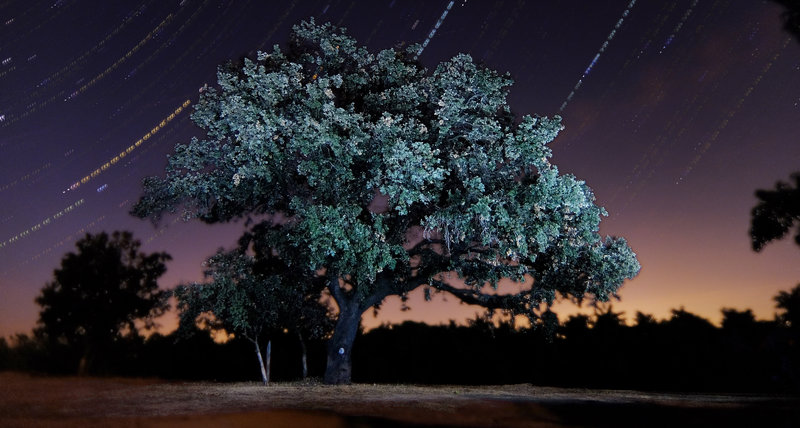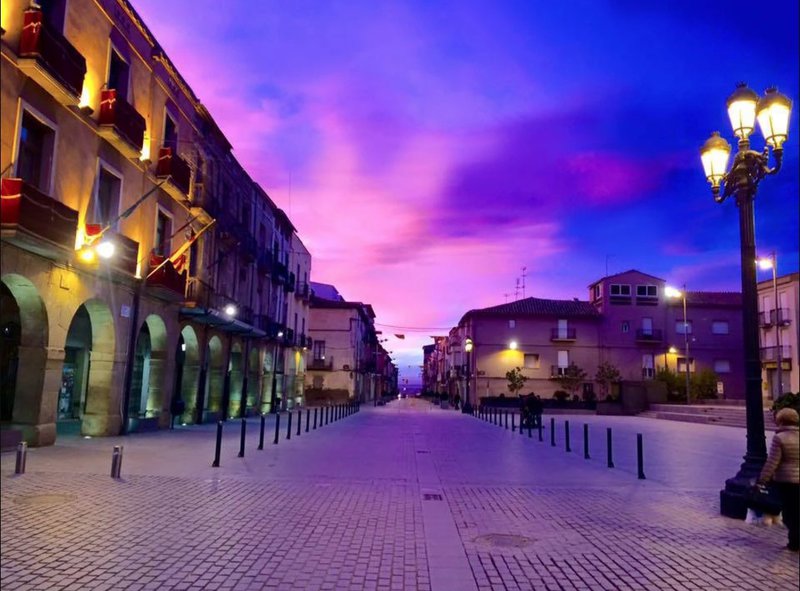Summer hot spots
One of Europe’s main holiday destinations, Catalonia has a wide variety of tourist sights to suit just about all tastes and budgets
Back to the Middle Ages in Girona
Catalonia’s northern capital is one of the best preserved medieval cities in Europe, with a host of treasures to discover, such as the old city wall or the labyrinthine Jewish quarter
A visit to Girona is a must for lovers of art history. The streets of the city offer a myriad of amazing experiences related to its great historic heritage. La Força Vella, the city’s ancient walls, the Cathedral, the Sant Feliu basilica, the Arab Baths and the old Jewish quarter (El Call) are just a few examples of Girona’s magnificent past, and visitors can discover new and hidden attractions around each corner and on every street.
The medieval route around Girona can start in any part of the city, but we propose starting at the Pujada de Sant Feliu, which leads to the cathedral, a Romanesque building which was later completed with Gothic naves and a Baroque facade. Girona’s singular landmark boasts monumental stone stairs and the largest nave in the world. Inside the cathedral there are some remarkable works of art, such as the Crist Jacent, by master artist Aloi, and eight paleo-Christian sarcophagi from the 4th century.
Arab Baths
The route continues out on carrer de la Força , a good example of the legacy the Romans left to the city, following carrer Ferran el Catòlic up to the Banys Àrabs (Arab Baths), a building dating back to the 12th century and inspired by Roman baths. The next stop after the plaça dels Jurats and carrer Santa Llúcia is the temple of Sant Pere de Galligans i Sant Nicolau, which functions as a museum but that is part of the most unique Romanesque buildings in the country and boasts a splendid basilica Benedictine cloister.
The city’s Jewish Quarter offers a surprising labyrinth of stone streets, corners and small squares that transport the visitor back in time. The visit to the medieval city can be completed with a stroll through the neighbourhoods of Sant Feliu and Sant Pere (north of Força Vella), the Areny and Vilanova (south) and Mercadal (west). Finally, to finish the itinerary, it is worth contemplating the city from its wall dating back to the Middle Ages and one of the longest in Europe.
Girona is all about medieval splendour, but also the Modernism of architect Rafael Masó, and the city’s museums, such as Casa Masó and the Cathedral’s Museu-Tresor. Yet, there are others that have helped the city gain an international reputation, such as the Museu del Cinema, with its collection of local filmmaker Tomàs Mallol.
More information: www.girona.cat/turisme/eng
Estany, a paradise of nature and history
The county of Pla de l’Estany brings together charming natural landscapes and a notable historical and archaeological heritage in a setting ideal for lovers of many sports
In just a few square kilometres, El Pla de l’Estany brings together a number of top quality historical sites. The Parc de les Coves Prehistòriques in Serinyà, the neolithic excavation at La Draga, the Vila Romana of Vilauba (in Camós) and the Museu Arqueològic Comarcal, are all proof of a rich cultural and historical heritage that dates back thousands of years. In addition, the county is home to Sant Esteve in Banyoles, the first Benedictine monastery in Catalonia, which had an important role in medieval times, as well as such exceptional works as the Romanesque church of Santa Maria de Porqueres or the Plaça Major in Banyoles, which dates back to the 13th century.
This rich heritage goes hand-in-hand with the exceptional natural surroundings, with Banyoles lake as the focal point, and with places where it is easy to lose oneself in nature, such as the Sant Miquel de Campmajor plain. Nature and culture also come together in the woods of Can Ginebreda, where visitors can discover the erotic sculptures of the artist Xicu Cabanyes in the amazing surroundings of pines and oaks.
There are many itineraries around the town, where nature lovers have plenty of opportunity to discover each corner of this outstanding landscape. Estany’s Darder museum and information centre is also an interesting visit. The venue features part of the collection that Francesc Darder left to Banyoles over a hundred years ago and tells the story and origins of Banyoles’ natural environment.
Sport for all
The county is also hard to match for sport. In fact, Banyoles was the first sports destination officially recognised by the Catalan government and is a certified location for the likes of mountain biking, swimming, rowing and canoeing. Banyoles is also a major venue for sports competitions and championships, with a full calendar of events that have provided the town with an international reputation since it hosted the rowing during the Olympic Games in 1992. What’s more Pla de l’Estany is ideal for horse riding, walking and trekking.
More information: turisme.plaestany.cat
Exploring Garrotxa’s medieval heritage
This itinerary takes in the towns of Santa Pau, Besalú and Sant Joan les Fonts, transporting the visitor hundreds of years back in time to the height of Catalonia’s Middle Ages
This route starts in Besalú, home to one of the best-preserved medieval sites in the country. Perhaps the best thing is begin with the town’s famous stone bridge, a local symbol that is considered one of the most notable architectural works in Girona province. Some 105 metres long and 30 metres high, the bridge was built in the 11th century, but has undergone a number of modifications since then.
The bridge leads the visitor into the town’s old quarter, the Casc Antic, where every street boasts unique buildings, such as the church of the Sant Pere monastery, which was founded in 977. Then there is the Cornellà house, one of the town’s best-preserved civil buildings, as well as the mikveh (a bath used for Jewish rituals) and the synagogue, the only one of its kind in Europe. It is also worth stopping to visit the Hospital de Sant Julià, with its façade that dates back to the 12th century. Another must is the Romanesque church of Sant Vicenç, with its features that reflect the transition to the Gothic style, as well as the building of the Cúria Reial, and the Colegiata de Santa Maria.
13th century castle
The second destination on the itinerary is the village of Santa Pau, where visitors can explore its medieval site that has the Baronia castle as its focal point. This 13th century palace was built around a central courtyard, while its southern wing has a triangular area that was the origin of the plaça Major, formerly known as the Firal dels Bous. This space was finished in the 14th century and is nowadays one of the most attractive medieval squares in the country.
The trip ends with a visit to Sant Joan les Fonts, with some of the most interesting examples of religious and civil architecture from the the Middle Ages. The first example is the church of the Benedictine monastery, which dates back to the 12th century. A highlight is its baptism pool and the reproduction of Crist en Majestat. The town also has a 13th-century bridge linking the old part with the parish church and the Castanyer area. It is built of volcanic stone and made up of a central arch and two side arches. Metres away from the bridge stands Juvinyà castle (12th-13th centuries), the oldest Romanesque civil building in Catalonia that today is home to Sant Joan les Fonts information centre.
For more information: www.besalu.cat.
Between Costa Brava and the sea
The area around Calella de Palagrugell offers a variety of coastal routes that guide walkers through a landscape of cliffs and coves as they make their way alongside the seafront
The Costa Brava is the jewel in the crown of Catalonia’s tourist industry. There are many ways to discover the 60-kilometre stretch of coast in the province of Girona, but no doubt one of the most attractive is walking its coastal paths. These winding footpaths that hug the coastline provide amazing sea views in a breathtaking landscape of dizzying cliffs and unspoilt coves.
Palafrugell is a municipality whose coastal paths are an unforgettable experience, allowing walkers to trace the coast from north to south, or vice versa, and passing through the charming seafront towns of Calella, Llafranc and Tamariu.
The first itinerary begins south-west of Calella de Palfrugell, and goes from Sant Roc beach to the Golfet, one of the local area’s most treasured spots. From Sant Roc, a flight of steps takes us down to the start of the coastal path and a comfortable walk that goes through small tunnels and offers spectacular views of Calella and the Formigues islands.
Another route kicks off in the eastern part of Calella de Palafrugell and passes through Llafranc as far as Sant Sebastià mountain. The starting point is Tres Pins and then right to the coastal path in the direction of Llafranc. Once in Marina square, the Garbí steps lead to the Passeig de Cípsela, with its enjoyable views of Llafranc bay. After more steps, the path goes up to the mountain of Sant Sebastià. The walk is well worth the effort, as it ends with a fantastic sight overlooking Callella and Llafranc.
A third option is to follow the Calella de Palafrugell coastline from the Sant Roc beach. From this spot, there is a number of small beaches and coves as far as Port Bo, the site of the popular Havaneres concert every summer. Then comes Còdol, the Primitiu Guri viewing point, the Canadell beach and finally, after a last set of steps, Tres Pins, where visitors can discover the Calella watchtower, built in 1597 to protect the region from pirates.
However, the coastal paths do not just provide the perfect excuse to spend time enjoying nature, but also a way of learning more about the local culture and heritage. The Palafrugell coastline, for example, boasts the Formigues islands, the site of a battle in which Roger de Llúria beat Phillip III of France in 1285.
For more information: en.costabrava.org.
Old and new on Barceloneta’s seafront
Barceloneta has become one of the Catalan capital’s most unique local areas, offering a place where visitors can find tradition and modernity living side by side all next to the sea
The Barceloneta neighbourhood is closely tied to the history of the Catalan capital. Originally built to house premises displaced by the construction of the Ciutadella fortress, the area was given a military structure, with straight narrow streets. As time passed, the area became a neighbourhood that reinforced the city’s relationship with the sea, through such things as the local fishermen or the small beach bars known as xiringuitos, which helped establish the area’s popularity.
Today, the neighbourhood has managed to preserve its historical roots, which combine and contrast well with a more modern and cosmopolitan air that was introduced following the transformation of the city for the Olympic Games in 1992. Barceloneta has become the ideal place for a stroll through its cramped streets, where the neighbours will still put out chairs to chat in the sun, while there is also no shortage of pavement cafés and restaurants to stop at. Barceloneta is also home to Catalonia’s History Museum, where visitors can find out about the evolution of the country from the first ancient settlers until today.
Secret Barceloneta
There are also a number of guided visits available in the neighbourhood, such as the visit to the fishermen’s association, the Confraria de Pescadors. Another highly recommended tour is “Barceloneta secrets”, which reveals some of the area’s unknown aspects. Downloading an information leaflet provides all you need to follow the route. One of the best things about this itinerary is that allows the visitor to find out about certain local spots that do not appear in classic guides, providing a greater insight into one of Barcelona’s most unique local areas.
For more information: www.barcelonetapladebarris.cat.
One walk, three mountains
The so-called “ruta dels 3 monts” is ideal for walkers looking for hikes amid the spectacular landscapes of precoastal Catalonia while learning about the area’s biodiversity and heritage
Landscape, culture and heritage come together in the 106 kilometres of an itinerary that passes through three emblematic points of precoastal Catalonia: the Montseny, Mola and Montserrat mountains. The “three mountains” route (Ruta dels 3 monts) provides enjoyable hiking in spectacular natural landscapes, the chance to discover local heritage and take advantage of the rich local cuisine.
The itinerary is split into six stages, which can be planned in different ways, depending on the interests and physical condition of each walker. The first stage starts in Montseny and covers 22 km, taking about eight hours, starting in the Conca of Alta Tordera, passing through the Pla de la Calma (which has fabulous views from Turó de l’Home, Les Agudes and Matagalls) and ends in Tagamanent.
Amazing views
The second stage goes as far as Sant Feliu de Codines, passing through Figaró-Montmany, and the peaks of Bertí and Sant Miquel de Fai (18 km, about seven hours). The third stage is easier, with 14 km leading to Gallifa (the sanctuary offers amazing views) and Sant Llorenç Savall, taking about three and a half hours and is less taxing than the previous stages. The fourth stage goes up to the peak of Mola offering the views of Montcau, a total of 24 km and seven and a half hours, with the itinerary ending in Mura. The fifth stage runs for 25 km as far as Monistrol de Montserrat, passing through Puig de la Calma, Rellinars and the meandering of the River Llobregat at Castellbell.
The final stage goes to monastery of Montserrat. It is only three and half kilometres but it is all uphill, while offering fantastic views of the mountain range and the surrounding landscape. In addition to the views, the whole itinerary allows walkers to continually discover the cultural heritage of this part of the country in the shape of Romanesque hermitages and the traditional old country farmhouses, as well as some unique Modernist buildings.
For more information: www.els3monts.
Amid vineyards and trenches in Penedès
In the heart of cava country, this itinerary begins with a visit to Vilobí and continues with a chance to buy Ordal peaches and see the remains of the Republican last line of defence
This trip beings at Vilobí del Penedès, some five kilometres from Vilafranca in the direction of Guardiola de Font-rubí. Before reaching the village, the vineyards on either side of the road provide an introduction to the rural tradition of the area and its devotion to winegrowing. On reaching the village, in the direction of the main square, follow the signs to Parc dels Talls, where parking is easy and features a sight that is gradually being adapted for visits: former chalk quarries that stopped operating in the 1990s and that nature itself is slowly turning into small lakes (called Pèlags inPenedès). The area includes an observation point to watch birds and a picnic zone. If you prefer something more substantial to eat or even would like to stay the night, the local area has a good offering in restaurants and accommodation (www.vilobi.cat).
Republican shelter
To learn more about local history, visitors can go to the Museu de Geologia (book by phone beforehand), and the Loxarel winery (www.loxarel.com), which includes a Civil War shelter the Republican army built below the estate’s vineyards, which were used as an airfield during the conflict. Over the years, the owners have used this spot (part of the Ruta de la Memòria Històrica) as a place to store cava.
If staying the night, the next day the itinerary continues in direction of Sant Pau d’Ordal. Every Sunday during the summer, this town has a market selling the well-known Ordal peaches, which are renowned for the aroma and flavour.
Next up is the Última Defensa de Barcelona route, which can be done on foot or by bicycle. The path meanders between quiet vineyards and woods, following the last line of defence of the Republican forces in their efforts to stop the advance of Franco’s army towards the Catalan capital. The 2.2 kilometre-long route features trenches and fortifications built during the war. If you follow the signs for Ruta 9, in the direction of the village of Pago, and you will eventually arrive at an information centre that explains more about the site’s history.
For more information: www.enoturismepenedes.cat.
A stroll along the Tarragona coast
Walkers can enjoy this leisurely walk that goes from the Tarragona seafront all the way to Altafulla along the coastal path that bypasses sandy beaches, landmarks, woods and cliffs
Unfortunately, few places on the Catalan coast have been spared from the effects of mass building spurred on by tourism. There are even fewer coastal spots that can be easily accessed directly from urban centres. Yet, one of those that do remain is the coastal pathway that overlooks the beaches in the north of Tarragona and leads walkers from the city to the seaside town of Altafulla. What’s more, the route proposed here has the advantage that both in Tarragona and Altafulla, there are local train stations nearby, making the itinerary available to walkers who do not have or who do not wish to use their cars.
Beginning the walk from Tarragona means following the promenade alongside Miracle beach in the direction of the Fortí de la Reina, a military fortification from the 18th century that during the War of the Spanish Succession was a strategic point for controlling the coastline in this area. The route continues towards Arrabassada beach and passes in front of the Sanatori Savinosa, a complex of buildings from the 1920s built to care for people who were suffering from tuberculosis and that was later used as an orphanage and hospital during the Spanish Civil War. Although it has now been empty for some four decades, last year a project was approved to rehabilitate the complex for public use.
Nature and history
The itinerary continues alongside the Savinosa and Capellans beaches to Llarga beach more than three kilometres away. When the sand comes to an end, the path goes by an old Roman quarry and into the so-called Marquesa wood, passing above the Fonda, or Arboçar cove that nestles among cliffs. After that comes the Calabeig, or Roca Plana, beach and reaches Mora beach, with its distinctive tower built to combat piracy in the 16th century. The path then continues to Tamarit castle and its beach of the same name, which turns into the Altafulla beach itself. The itinerary can be topped off with a visit to the Munts archaeological site. In all, the walk is some 16 kilometres that can be done at a leisurely pace and is therefore ideal for families.
More information:
turismetarragona.cat
Following the course of the River Ebre
This itinerary connects three different towns in three different counties, allowing for three different visits to a Modernist winery, caves and a castle, all part of the three Cs route
Benifallet in Baix Ebre, Pinell de Brai in Terra Alta and Miravet in Ribera d’Ebre are the three towns that make up the so-called Ruta de les tres C (Route of the three Cs), in a circular itinerary by car that is less than 25 kilometres in total and that includes the possibility of two boat trips along the River Ebre. As it is a circular route, the starting point can from be any of the three towns, depending on the preference of the visitor.
The Cs in the name of this itinerary refer to celler, coves i castell (winery, caves and castle), which are the main attractions that the three towns on the route offer visitors: the Celler Cooperatiu winery, or Catedral del Vi, in Pinell de Brai, the Meravelles caves in Benifallet and the Templar castle of Miravet.
The Celler Cooperatiu winery is in a Modernist building built between 1918 and 1927, and is the work of the architect Cèsar Martinell, who was born in Valls in 1888 and was a follower of Gaudí. Declared an asset of national cultural interest by the Catalan government, it is also known as the Cathedral of Wine.
After visiting this exceptional site, the next point of interest is Miravet, where the castle overlooking the old town can be visited. This old fortress is of Arab origin and has become the most-visited tourist site in Terres de l’Ebre. Among the castle’s different areas, the weapons courtyard and the Romanesque chapel are particularly worth visiting. It is considered one of the best examples of religious and military Templar architecture in the entire western world, and has the most intact rooms in such a structure in Catalonia. Moreover, its high elevation provides splendid views of the meandering River Ebre as it passes by Miravet.
Finally, the itinerary in this particular order ends at Benifallet, with a visit to its spectacular caves. They are famous for the quantity and quality of their rock formations and unusual geological features, such as stalactites and stalagmites. Out of all the caves, perhaps the most outstanding is the Meravelles cave, a 510-metre route with many outlandish formations.
More information: www.viulebre.com/rutes/ruta-de-les-3c
A dose of spirituality around Solsonès
The Miracle sanctuary with its church and monastery, the Sant Esteve church crypt in Olius and Solsona’s ice well are three must-see sites on this itinerary around the Lleida county
A quarter of an hour by car from Solsona in the direction of Biosca is the Miracle sanctuary, a site of great cultural and architectural interest. Building began on the first chapel in the mid-15th century, soon after two young shepherds reported seeing an apparition of the Virgin Mary. The complex, which today offers liturgical and cultural activities, is made up of the Mare de Déu del Miracle church, a Benedictine monastery run by the monks of Montserrat, and the house of spirituality and cells of Nostra Senyora, two buildings that offer visitors different accommodation options. Among the features worth visiting in the sanctuary is the Baroque altarpiece, the organ, the sacristy and the monastery’s cloister. Moreover, the complex’s location provides great panoramic views of Solsonès county. Every Saturday, Sunday and public holiday at 11am there are guided visits (with reservation).
Another visit near Solsona that is a must is the Sant Esteve church in Olius, which is four kilometres in the direction of Berga. The building is a good example of the Lombard Romanesque of the 11th century and is made up of a covered nave with barrel vaults. This church’s belltower is square with arched widows above molded embrasures. However, perhaps the building’s most iconic element is its crypt, which is located below the altar and is dedicated to the Virgin Mary. The crypt is made up of three small naves supported by differently styled columns. Also nearby is the Modernist cemetery of Olius. Built in 1916, it is a curious spot in which the bodies of a number off departed locals are buried within the rock.
After so much spirituality, a good idea might be to go back to Solsona to visit a more familiar historic site. In this case, Solsona’s ice well, an underground structure near the Santa Maria church that dates back to the 16th century. The well was used until the 19th century to build ip a supply of ice during the winter, which was then sold during the summer months. A visit to the well shows how the people of the time ingeniously got round the lack of fridges.
More information: www.turismesolsones.com
Discovering history among the fruit trees
A 20-kilometre itinerary by car through the western part of the Segrià county in Lleida takes visitors through unique villages full of history against the backdrop of cultivated fields
This quiet route by car allows visitors to discover some of the most idyllic parts of the Segrià county, passing through typical and unique villages of white houses surrounded by fields of fruit trees in particular. Perhaps the best place to start is in Almacelles, where it is worth visiting the historic centre, which dates back to the 18th century, and especially the spacious plaça de la Vila. Other interesting spots for visitors are the Museu d’Arquitectura i Urbanisme Josep Mas Dordal, which traces the city’s origins, and the Dordal, where a few years ago remains of the mediaeval Almacelles, which was destroyed during the Guerra dels Segadors, were discovered.
From here, the itinerary continues through a landscape of hills and fields, towards Sucs, where visitors can stop at the local church. Continuing on the same road and turning left, direction east, from the top of a hill visitors can contemplate the remains of the recently restored Gimenells castle, which boasts more than a thousand years of history. Entering the village visitors see the local bell tower , host to nesting storks, and which provides a great view of the area.
After Gimenells, the route heads towards south to Vallmanys, part of the municipality of Alcarràs, with its prehistoric remains that feature such highlights as a megalithic grave, as well as a beautiful 17th-century manor house nearby.
Finally, after 22 km, the route ends in Alcarràs. The town’s symbol, as shown on its emblem, is a centenary holm oak, which stands in the middle of the Pla de l’Alzina. A must for visitors is the church of Mare de Déu de l’Assumpció, an 18th-century building with a Baroque façade that boasts three great naves. The church’s main peculiarity is that it was built on the remains of an early castle and below its pavement, four compartments of the former fortress have been preserved. Other interesting spots to visit are the Fossar, with the remains of a 12th-century Romanesque church, the Modernist Sindicat building, which leads to a former medieval mill, as well as the Ethnologic Information Centre, which displays all kinds of tools that were used before the onset of modern agriculture.
More information: www.segria.cat

